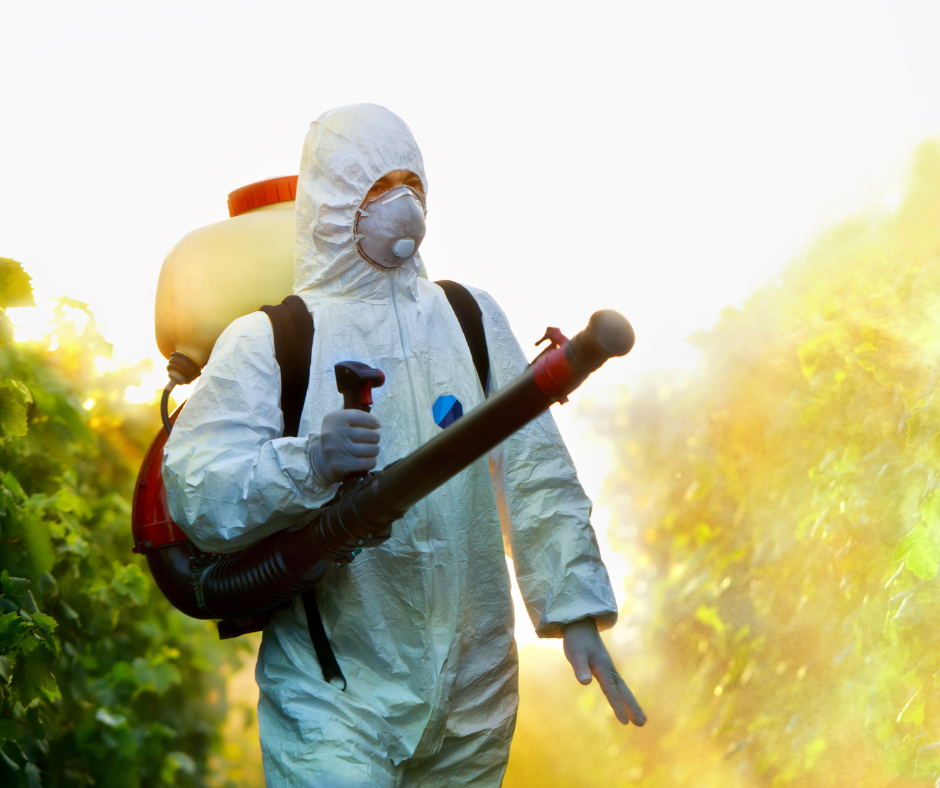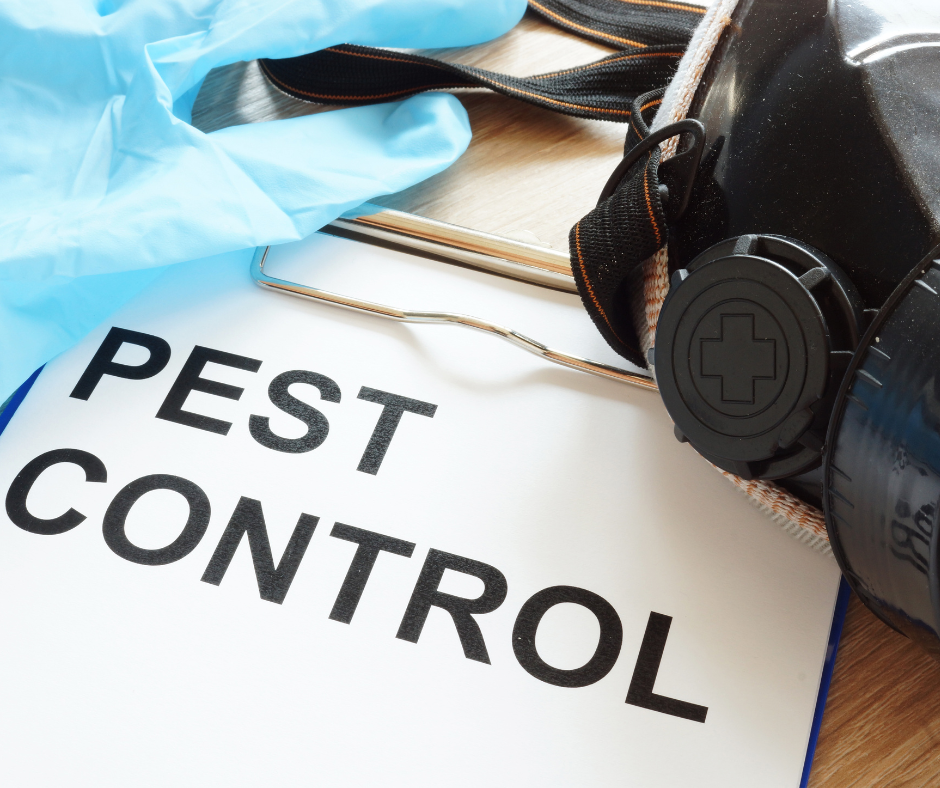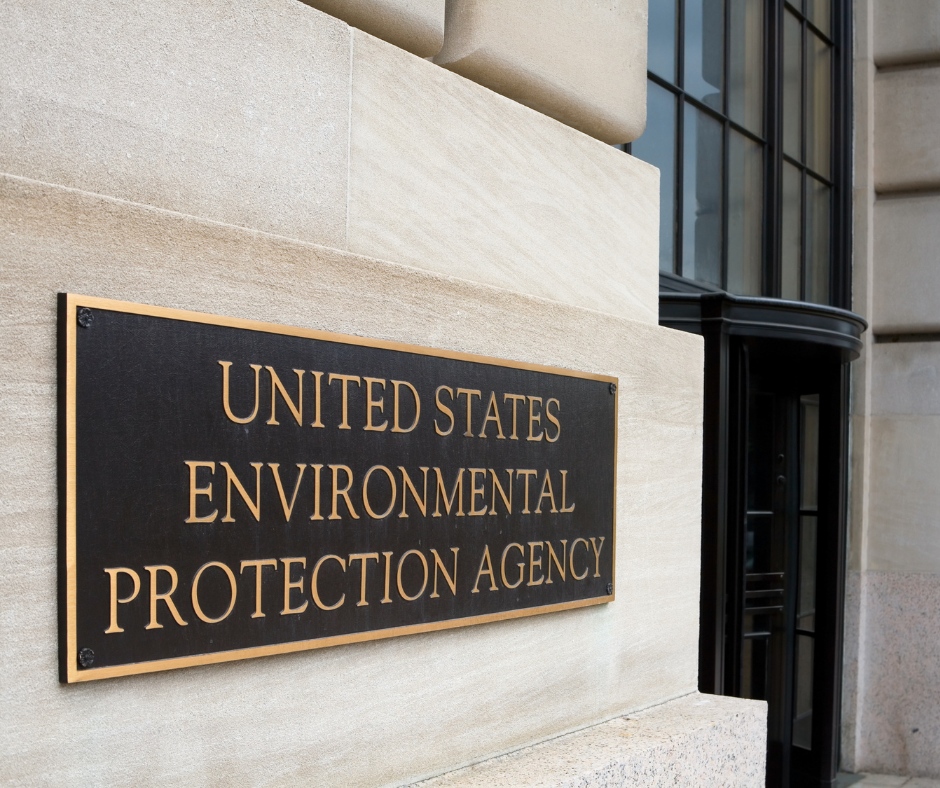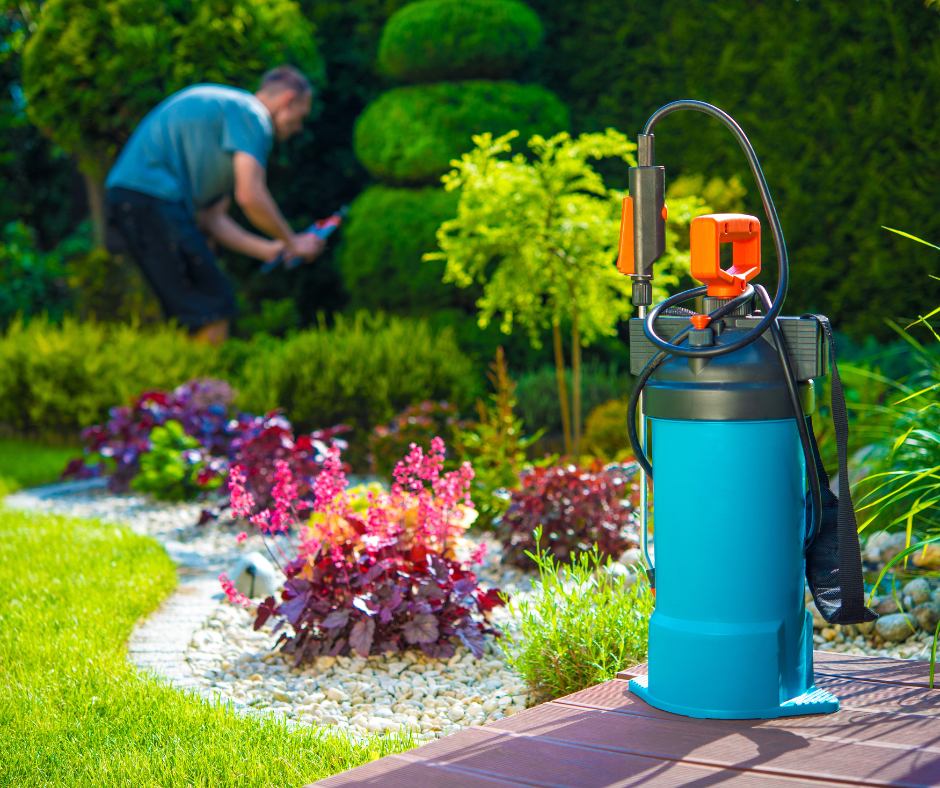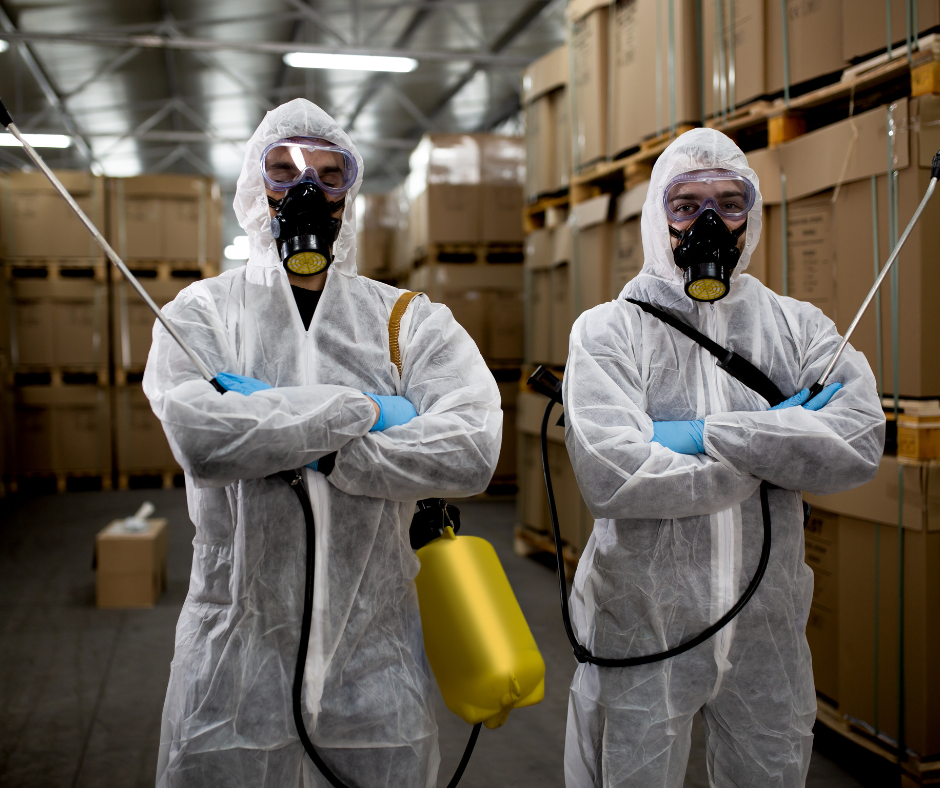Pest control chemical manufacturing has come a long way over the years. While traditional pesticides have been effective in controlling pest populations, they often have negative environmental impacts and can harm non-target organisms. As a result, there has been a growing focus on developing more sustainable and environmentally friendly approaches to pest management.
In this article, we will discuss the latest innovations in pest control chemical manufacturing. These include advanced biopesticides, microbial pest control, precision pest control, integrated pest management (IPM), reduced-risk pesticides, nanotechnology, plant-incorporated protectants (PIPs), insect hormones, gene silencing, and repellents.
- Advanced Biopesticides
- Microbial Pest Control
- Precision Pest Control
- Integrated Pest Management (IPM)
- Reduced-risk Pesticides
- Nanotechnology
- Plant-Incorporated Protectants (PIPs)
- Insect Hormones
- Gene Silencing
- Repellents
- How can Deskera Help You?
- Key Takeaways
- Related Articles
Advanced Biopesticides
Advanced biopesticides are a type of pest control product derived from natural materials such as plants, bacteria, and fungi. Unlike traditional chemical pesticides, which can be harmful to the environment and non-target organisms, biopesticides are considered safer and more eco-friendly.
Advanced biopesticides are made using advanced manufacturing techniques that improve their efficacy and specificity. They are designed to target specific pests while minimizing the impact on beneficial insects, wildlife, and the environment. Advanced biopesticides can be used in a variety of settings, including agriculture, forestry, and urban pest management.
There are several types of advanced biopesticides, including:
- Microbial pesticides: These are pesticides derived from bacteria, viruses, and fungi that can control pests by infecting them or producing toxins that kill or repel them.
- Biochemical pesticides: These are pesticides derived from naturally occurring substances such as pheromones, oils, and plant extracts that can interfere with pests' mating, feeding, or reproduction.
- Plant-incorporated protectants: These are pesticides that are genetically engineered into plants, providing them with built-in pest resistance.
- Semiochemicals: These are chemicals that mimic natural pheromones and attract or repel pests, disrupting their mating or feeding behaviors.
Advanced biopesticides are a promising alternative to traditional chemical pesticides, as they provide effective pest control while minimizing the risks to human health and the environment. However, it is important to note that they are not a one-size-fits-all solution and may require different application methods or additional pest control strategies to achieve optimal results.
Microbial Pest Control
Microbial pest control is a type of pest management that uses microorganisms to control pest populations. Microbes such as bacteria, fungi, viruses, and nematodes are naturally present in the environment and can be used to control a variety of pests, including insects, mites, and plant pathogens.
Microbial pest control is a more eco-friendly and sustainable approach to pest management as compared to traditional chemical pesticides. Microbes can be highly specific to the pests they target, minimizing the impact on beneficial insects and the environment.
There are two main types of microbial pest control:
- Microbial pesticides: These are pest control products made from live or dead microorganisms, or the by-products of microorganisms. They can be formulated as sprays, baits, or powders, and can be used in various applications, including agriculture, forestry, and urban pest management.
- Microbial biocontrol agents: These are microorganisms that are released into the environment to control pests. They can be naturally occurring or introduced into the environment, and they can establish themselves as a permanent part of the ecosystem. Examples of microbial biocontrol agents include the bacterium Bacillus thuringiensis, which is commonly used to control insect pests, and the fungus Beauveria bassiana, which can control a variety of pests including whiteflies, thrips, and spider mites.
Microbial pest control is an important tool in integrated pest management (IPM), a holistic approach to pest control that combines multiple pest control methods to achieve effective and sustainable pest management. While microbial pest control has several advantages, it is important to note that it may not be effective in all situations and may require a combination of other pest control strategies to achieve optimal results.
Precision Pest Control
Precision pest control is a type of pest management that uses advanced technologies and methods to precisely target and control pests while minimizing the impact on non-target organisms and the environment. This approach relies on the use of data, sensors, and analytics to identify and monitor pest populations, allowing for the targeted application of pesticides and other control methods.
Precision pest control typically involves the following steps:
- Monitoring: The first step in precision pest control is to monitor pest populations using advanced technologies such as sensors, traps, and cameras. This data is then used to identify the location and severity of pest infestations.
- Analysis: Once the pest populations have been identified, the data is analyzed to determine the best course of action. This may involve the use of pesticides, biological controls, or other pest management strategies.
- Treatment: Treatment is then applied in a precise manner to target the specific areas where pests are present. This may involve the use of targeted sprays, baits, or other methods.
- Evaluation: After treatment, the pest populations are monitored again to determine the effectiveness of the control measures. This data is then used to refine the pest management strategy and optimize future treatments.
Precision pest control has several advantages over traditional pest control methods. It minimizes the amount of pesticides needed, reducing the risk of exposure to non-target organisms and the environment. It also allows for more precise targeting of pests, increasing the effectiveness of control measures and reducing the likelihood of pesticide resistance. Finally, precision pest control can reduce costs and improve overall efficiency, as pest control treatments can be targeted and timed more effectively.
Integrated Pest Management (IPM)
Integrated Pest Management (IPM) is a holistic approach to pest management that combines multiple pest control methods to achieve effective and sustainable pest management. The goal of IPM is to control pests while minimizing the impact on human health, non-target organisms, and the environment. IPM focuses on prevention, monitoring, and control to achieve long-term pest management solutions.
IPM typically involves the following steps:
- Prevention: The first step in IPM is to prevent pests from becoming a problem. This may involve implementing cultural practices such as proper sanitation, crop rotation, and use of resistant plant varieties.
- Monitoring: The next step is to monitor pest populations using various tools and methods such as traps, visual inspections, and data analysis. This helps to identify the type and severity of the pest problem.
- Thresholds: After monitoring, IPM sets thresholds to determine when action is needed. This involves determining the level of pest infestation that warrants action.
- Control: Once thresholds are reached, control measures are implemented using a combination of chemical, biological, and cultural methods. This may include the use of pesticides, natural predators, and cultural practices.
- Evaluation: Finally, the effectiveness of the pest management program is evaluated to determine whether it is achieving its goals. This involves monitoring pest populations and assessing the impact of control measures.
IPM is a flexible approach that can be tailored to specific pests and environments. It has several advantages over traditional pest control methods, including reducing the amount of pesticides needed, minimizing the impact on non-target organisms, and reducing the likelihood of pesticide resistance. It is also cost-effective and promotes sustainable pest management practices.
Reduced-risk Pesticides
Reduced-risk pesticides are a type of pesticide that is designed to be less harmful to human health and the environment than traditional pesticides. These pesticides are formulated to be more targeted and specific in their mode of action, reducing the impact on non-target organisms.
Reduced-risk pesticides have several advantages over traditional pesticides:
- Reduced toxicity: They are less toxic to humans and non-target organisms, reducing the risk of exposure to harmful chemicals.
- More targeted: They are more targeted in their mode of action, meaning they are less likely to affect non-target organisms.
- Lower environmental impact: They have a lower environmental impact, reducing the risk of contamination of soil and water.
- Less likely to develop resistance: They are less likely to lead to the development of pesticide resistance in pest populations.
Examples of reduced-risk pesticides include insect growth regulators, pheromone traps, and microbial pesticides. Insect growth regulators are chemicals that disrupt the growth and development of insects, preventing them from reaching maturity and reproducing. Pheromone traps use synthetic versions of insect sex pheromones to lure and trap male insects, disrupting the mating cycle and reducing pest populations. Microbial pesticides use naturally occurring microorganisms to control pests, minimizing the impact on non-target organisms and the environment.
Reduced-risk pesticides are an important tool in integrated pest management (IPM), a holistic approach to pest management that combines multiple pest control methods to achieve effective and sustainable pest management. While reduced-risk pesticides have several advantages, it is important to note that they may not be effective in all situations and may require a combination of other pest control strategies to achieve optimal results.
Nanotechnology
Nanotechnology is an emerging field that involves the use of materials and devices at the nanoscale (typically between 1 and 100 nanometers) to solve various problems in different industries, including pest management. In pest control, nanotechnology has the potential to revolutionize the way we approach pest control by providing new and more effective ways to manage pests.
Some potential applications of nanotechnology in pest control include:
- Nanoparticle-based pesticides: Nanoparticles can be used to deliver pesticides more efficiently and precisely, reducing the amount of pesticide needed and minimizing the impact on non-target organisms. Nanoparticles can also increase the effectiveness of pesticides by improving their solubility and stability.
- Nanosensors: Nanosensors can be used to detect pests and monitor pest populations, providing real-time data that can be used to make informed pest control decisions.
- Nanomaterial-based traps: Nanomaterials can be used to create traps that are more effective at capturing and killing pests. For example, nanoparticles can be used to create surfaces that are highly adhesive to pests, making it easier to trap and eliminate them.
- Nanobiosensors: Nanobiosensors can be used to detect specific molecules produced by pests, such as pheromones, allowing for more targeted pest control strategies.
- Nanoparticle-based repellents: Nanoparticles can be used to create repellents that are more effective at keeping pests away from crops and other areas.
While nanotechnology has the potential to revolutionize pest control, there are also concerns about the potential risks associated with the use of nanoparticles, such as their potential toxicity to humans and the environment. As such, it is important to carefully assess the risks and benefits of any nanotechnology-based pest control approach before implementing it on a large scale.
Plant-Incorporated Protectants (PIPs)
Plant-Incorporated Protectants (PIPs) are a type of pesticide that is produced in genetically modified plants. The plants are engineered to produce proteins that have pesticidal properties, providing a built-in defense against pests.
The use of PIPs has several advantages over traditional pesticides:
- Reduced pesticide use: PIPs can reduce the amount of pesticides needed to control pests, as the plants produce their own protective proteins.
- More targeted: PIPs are more targeted in their mode of action, as the protective proteins are only produced in the specific plant tissues where they are needed.
- Less harmful: PIPs are generally less harmful to non-target organisms, as the proteins are specific to the pests they are designed to control.
- Sustainable: PIPs can be more sustainable than traditional pesticides, as they can reduce the environmental impact of pesticide use.
Some examples of PIPs include Bt (Bacillus thuringiensis) crops, which produce proteins that are toxic to specific pests such as the corn borer and cotton bollworm. Another example is the use of RNA interference (RNAi) technology to produce plants that are resistant to viruses and other pests.
While PIPs have several advantages, there are also concerns about their potential impact on human health and the environment. It is important to carefully assess the risks and benefits of any PIP technology before implementing it on a large scale. Additionally, it is important to ensure that PIPs are used as part of an integrated pest management (IPM) program that includes other pest control methods to minimize the risk of pest resistance and environmental impact.
Insect Hormones
Insect hormones are naturally occurring chemicals that regulate various biological processes in insects, such as growth, development, and reproduction. Insect hormones have been used in pest control for many years, and they are considered a more targeted and environmentally friendly alternative to traditional pesticides.
Some examples of insect hormones used in pest control include:
- Juvenile hormone analogs (JHAs): JHAs are chemicals that mimic the action of juvenile hormone, which regulates the growth and development of insects. JHAs can be used to disrupt the life cycle of insects by preventing them from reaching maturity and reproducing.
- Ecdysone agonists: Ecdysone is a hormone that regulates molting and metamorphosis in insects. Ecdysone agonists are chemicals that mimic the action of ecdysone, inducing premature molting and preventing insects from reaching adulthood.
- Pheromones: Pheromones are chemicals that insects use to communicate with each other, such as to attract mates or mark food sources. Synthetic versions of pheromones can be used to disrupt the mating behavior of insects, reducing their population size.
Insect hormones have several advantages over traditional pesticides:
- More targeted: Insect hormones are more targeted in their mode of action, affecting only the targeted pest species.
- Environmentally friendly: Insect hormones are generally considered to be more environmentally friendly than traditional pesticides, as they have a lower impact on non-target organisms and the environment.
- Reduced pesticide use: Insect hormones can reduce the amount of pesticides needed to control pests, as they are more specific and effective at lower doses.
While insect hormones have several advantages, they may not be effective in all situations and may require a combination of other pest control strategies to achieve optimal results. Additionally, it is important to carefully assess the risks and benefits of any insect hormone-based pest control approach before implementing it on a large scale.
Gene Silencing
Gene silencing is a technique used to reduce or eliminate the expression of specific genes in organisms. This technique has been used in pest control to disrupt the biological processes of pests and reduce their population size.
There are two main approaches to gene silencing in pest control:
- RNA interference (RNAi): RNAi is a naturally occurring mechanism in which small RNA molecules bind to specific messenger RNA (mRNA) molecules and prevent them from being translated into proteins. Synthetic RNA molecules can be designed to target and silence specific genes in pests, disrupting their growth and development.
- CRISPR/Cas9 gene editing: CRISPR/Cas9 is a gene editing technique that allows specific genes to be edited or deleted from an organism's genome. This technique can be used to target and disrupt genes that are essential for pest survival and reproduction.
Gene silencing has several advantages over traditional pesticides:
- Targeted: Gene silencing is more targeted in its mode of action, affecting only the specific genes that are targeted.
- Environmentally friendly: Gene silencing is generally considered to be more environmentally friendly than traditional pesticides, as it has a lower impact on non-target organisms and the environment.
- Reduced pesticide use: Gene silencing can reduce the amount of pesticides needed to control pests, as it is more specific and effective at lower doses.
While gene silencing has several advantages, it is a relatively new technology and its long-term effects on the environment and non-target organisms are not yet fully understood. Additionally, the use of gene silencing in pest control raises ethical and regulatory concerns, and careful assessment of the risks and benefits is necessary before implementing this technology on a large scale.
Repellents
Repellents are substances that are used to discourage pests from approaching or settling in a particular area. They work by creating a scent, taste, or other sensory experience that is unpleasant or aversive to pests. Repellents are commonly used in pest control to keep pests away from homes, gardens, and crops.
Some common types of repellents used in pest control include:
- Chemical repellents: Chemical repellents are synthetic compounds that are designed to mimic natural repellents found in plants or animals. They can be applied to the skin, clothing, or surfaces to repel insects, rodents, and other pests.
- Natural repellents: Natural repellents are derived from plants or other natural sources and are considered to be more environmentally friendly than chemical repellents. Examples of natural repellents include citronella, peppermint, and garlic.
- Electronic repellents: Electronic repellents emit high-frequency sound waves or vibrations that are unpleasant to pests. They are commonly used to repel rodents and insects from homes and gardens.
Repellents have several advantages over traditional pesticides:
- Safe for humans and pets: Repellents are generally considered to be safe for humans and pets when used as directed.
- Environmentally friendly: Repellents are generally considered to be more environmentally friendly than traditional pesticides, as they have a lower impact on non-target organisms and the environment.
- Reduced pesticide use: Repellents can reduce the amount of pesticides needed to control pests, as they can be used to deter pests before they become a problem.
While repellents have several advantages, they may not be effective in all situations and may require a combination of other pest control strategies to achieve optimal results. Additionally, it is important to carefully assess the risks and benefits of any repellent-based pest control approach before implementing it on a large scale.
How can Deskera Help You?
Deskera's integrated financial planning tools allow investors to better plan their investments and track their progress. It can help investors make decisions faster and more accurately.
Deskera Books can assist you in automating your accounting and mitigating business risks. Deskera makes it easier to create invoices by automating many other procedures, reducing your team's administrative workload.
Deskera also offers a suite of integrated applications to help businesses manage their financials, inventory, and operations. Furthermore, other business aspects such as HR (Deskera People), CRM (Deskera CRM), and ERP are provided by Deskera. These could be crucial and can help short sellers keep track of their businesses and make better decisions.
Key Takeaways
Here are the main points of the latest innovations in pest control chemical manufacturing:
- Advanced biopesticides, such as entomopathogenic fungi and bacteria, are becoming more prevalent in pest control due to their effectiveness and environmental friendliness.
- Microbial pest control involves using naturally occurring microorganisms to control pest populations, often in combination with other pest control strategies.
- Precision pest control uses targeted approaches to identify and treat pest infestations, reducing the need for broad-spectrum pesticides.
- Integrated pest management (IPM) is an approach that combines multiple pest control strategies to manage pest populations in a sustainable and environmentally friendly way.
- Reduced-risk pesticides are designed to have lower toxicity and environmental impact than traditional pesticides, while still being effective at controlling pests.
- Nanotechnology is being explored for use in pest control, with potential applications in developing new pesticides and improving the efficacy of existing ones.
- Plant-incorporated protectants (PIPs) involve genetically engineering crops to produce proteins that protect against pests, reducing the need for synthetic pesticides.
- Insect hormones can be used to disrupt the growth and reproduction of pest populations, reducing their numbers and minimizing the need for traditional pesticides.
- Gene silencing is a technique that can be used to disrupt the biological processes of pests, reducing their population size and minimizing the need for traditional pesticides.
- Repellents are substances that discourage pests from approaching or settling in a particular area, reducing the need for traditional pesticides.
Overall, the latest innovations in pest control chemical manufacturing aim to develop more sustainable and environmentally friendly approaches to pest management while still effectively controlling pest populations.
Related Articles
